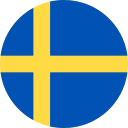to make animals produce offspring in a way that is suitable for human beings

uppfödda, föröka
all wild animals, considered as a whole, living in the natural environment

vildliv, fauna
(of an animal, plant, etc.) being at risk of extinction

utrotningshotad
any of the light and soft parts covering the body of a bird

fjäder, dun
the thick, soft hair that grows on the body of some animals such as cats, dogs, etc.

päls, hår
a tropical bird with bright colors and a curved beak that can be trained to mimic human speech

papegoja, undulat
an animal's foot that typically has a combination of nails, claws, fur, and pads

tass, klo
a large white bear which lives in the North Pole and is well-adapted to its icy environment

isbjörn, polarbjörn
a group that animals, plants, etc. of the same type which are capable of producing healthy offspring with each other are divided into

art, arter
the part of the body of an animal, a bird or a fish that sticks out at the back, which can move

svans, djursvans
the protection of the natural environment and resources from wasteful human activities

bevarande, skydd
a dormant state in animals, characterized by lowered body temperature and metabolic activity, often during winter to conserve energy

vinterdvala, hibernation
to keep something from change or harm

bevara, skydda
a male bird with a large shiny colorful tail having eyelike patterns that can be raised for display

påfågel
| Cambridge English: FCE (B2 First) |
|---|
